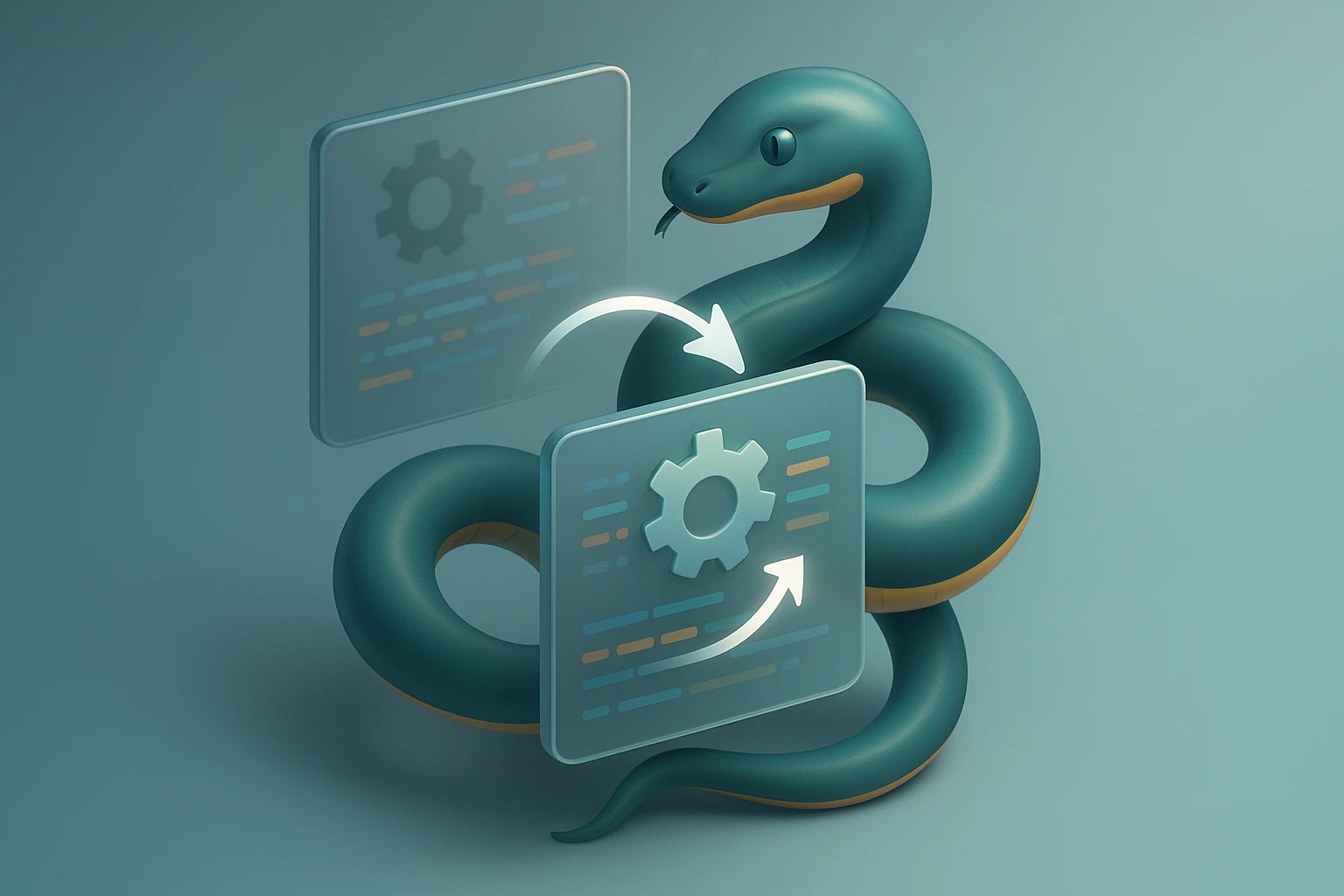How to Measure Script Execution Time

How to Measure Script Execution Time
Performance optimization stands as one of the most critical aspects of modern software development. Whether you're building a simple web application or a complex enterprise system, understanding how long your code takes to execute can mean the difference between a smooth user experience and frustrated customers abandoning your platform. The ability to accurately measure script execution time empowers developers to identify bottlenecks, optimize resource usage, and deliver applications that respond instantly to user interactions.
At its core, measuring script execution time involves capturing the timestamp before and after a code segment runs, then calculating the difference. This seemingly simple concept opens doors to understanding application behavior, comparing algorithm efficiency, and making data-driven decisions about code architecture. From JavaScript running in browsers to Python scripts processing data on servers, every programming environment offers tools and techniques for timing code execution.
Throughout this comprehensive guide, you'll discover multiple approaches to measuring execution time across different programming languages and environments. We'll explore native timing functions, advanced profiling tools, best practices for accurate measurements, and common pitfalls that can skew your results. You'll learn when to use simple timing methods versus sophisticated profiling frameworks, how to interpret timing data correctly, and practical strategies for integrating performance measurement into your development workflow.
Understanding the Fundamentals of Time Measurement
Before diving into specific implementation techniques, grasping the underlying principles of time measurement in computing environments proves essential. Computers track time using various clocks and timers, each serving different purposes with varying levels of precision. System clocks typically measure wall-clock time (the actual elapsed time in the real world), while process clocks track CPU time consumed by your specific code.
The distinction between these timing mechanisms matters significantly when measuring script execution. Wall-clock time includes everything: your code execution, operating system interruptions, other processes competing for CPU resources, and even time spent waiting for I/O operations. CPU time, conversely, counts only the processor cycles actually spent executing your instructions. For performance optimization, you'll often want both perspectives to understand whether your code runs slowly due to computational complexity or external factors.
Resolution and precision represent another fundamental consideration. Different timing methods offer varying levels of granularity, from milliseconds down to nanoseconds. Higher precision doesn't always translate to better measurements, though. System noise, measurement overhead, and the inherent variability of modern computing environments mean that extremely precise measurements of very short operations can actually produce less reliable results than slightly coarser measurements.
"The most expensive operation in programming isn't computation—it's guessing about performance without measuring."
Basic Timing Approaches Across Languages
Most programming languages provide straightforward mechanisms for capturing timestamps. In JavaScript, the Date.now() method returns milliseconds since the Unix epoch, while performance.now() offers microsecond precision relative to page load. Python developers typically reach for the time module, which provides both time.time() for wall-clock measurements and time.perf_counter() for high-resolution timing.
The basic pattern remains consistent across languages: capture a timestamp before the operation, execute the code you want to measure, capture another timestamp, then subtract the first from the second. This simple approach works remarkably well for quick performance checks during development, though it requires careful implementation to avoid common mistakes that compromise accuracy.
// JavaScript example
const startTime = performance.now();
// Your code here
performComplexCalculation();
const endTime = performance.now();
console.log(`Execution time: ${endTime - startTime} milliseconds`);This straightforward method serves as the foundation for more sophisticated timing techniques. Understanding its strengths and limitations helps you choose appropriate measurement strategies for different scenarios. For one-off measurements during development, this approach suffices. For production monitoring or detailed performance analysis, you'll need more robust solutions.
JavaScript Performance Measurement Techniques
JavaScript environments, particularly browsers, offer several specialized APIs for measuring execution time with varying degrees of precision and capability. The Performance API has become the gold standard for browser-based timing, providing high-resolution timestamps and built-in profiling capabilities that integrate seamlessly with browser developer tools.
The performance.now() method returns a DOMHighResTimeStamp representing the elapsed time in milliseconds since the time origin, with microsecond precision. Unlike Date.now(), which can be affected by system clock adjustments, performance.now() uses a monotonic clock that always moves forward at a constant rate. This characteristic makes it ideal for measuring durations, as you won't encounter negative time differences due to clock synchronization.
Using Performance Marks and Measures
Beyond simple timestamp capture, the Performance API provides marks and measures for more structured timing. Marks represent named timestamps you place at specific points in your code, while measures calculate the duration between two marks. This approach offers several advantages: marks appear in browser performance timelines, measures integrate with performance monitoring tools, and the abstraction makes timing code more readable and maintainable.
// Creating performance marks and measures
performance.mark('operation-start');
// Execute your operation
processLargeDataset(data);
performance.mark('operation-end');
performance.measure('operation-duration', 'operation-start', 'operation-end');
// Retrieve the measurement
const measure = performance.getEntriesByName('operation-duration')[0];
console.log(`Operation took ${measure.duration} milliseconds`);Console timing methods provide another convenient option for quick measurements during development. The console.time() and console.timeEnd() pair creates labeled timers that automatically log elapsed time. While less precise than the Performance API, these methods require minimal code and prove invaluable for rapid performance checks.
"Measurement without context is just numbers. Understanding what affects your timings transforms data into actionable insights."
| Method | Precision | Best Use Case | Browser Support |
|---|---|---|---|
| Date.now() | Milliseconds | Simple timestamps, compatibility | Universal |
| performance.now() | Microseconds | Accurate duration measurement | Modern browsers |
| Performance Marks/Measures | Microseconds | Structured profiling, DevTools integration | Modern browsers |
| console.time() | Milliseconds | Quick development checks | Universal |
Node.js Specific Timing Approaches
Node.js environments provide access to the same Performance API available in browsers, plus additional timing mechanisms suited to server-side code. The process.hrtime() method returns high-resolution real time in a [seconds, nanoseconds] tuple, offering exceptional precision for measuring short operations. Node.js 10.7.0 introduced process.hrtime.bigint(), which returns nanoseconds as a single BigInt value, simplifying duration calculations.
For asynchronous operations common in Node.js applications, proper timing requires careful consideration of the event loop and callback execution. Measuring only synchronous code segments might miss significant performance characteristics of I/O-bound operations. The async_hooks module enables tracking asynchronous resource lifecycles, though it introduces overhead that can affect measurements.
// Node.js high-resolution timing
const start = process.hrtime.bigint();
await performAsyncOperation();
const end = process.hrtime.bigint();
const durationNs = end - start;
console.log(`Operation took ${durationNs / 1000000n} milliseconds`);Python Timing Methods and Best Practices
Python's standard library offers multiple timing options through the time module, each suited to different measurement scenarios. The time.perf_counter() function provides the highest available resolution for measuring short durations, using a clock that includes time elapsed during sleep and is system-wide. For CPU time measurement, time.process_time() returns the sum of system and user CPU time, excluding sleep time.
The timeit module represents Python's dedicated solution for benchmarking code snippets. It automatically handles common pitfalls like garbage collection interference and provides statistical analysis through multiple execution runs. This module proves particularly valuable when comparing different implementations or algorithms, as it controls for many variables that can skew simple timing measurements.
Using the timeit Module Effectively
The timeit module can be used from the command line, imported in scripts, or invoked directly from the Python interpreter. It executes code multiple times and reports the total time, automatically determining an appropriate number of repetitions based on execution speed. This statistical approach produces more reliable results than single execution measurements, especially for fast operations that complete in microseconds.
# Using timeit for accurate benchmarking
import timeit
# Timing a simple statement
execution_time = timeit.timeit('sum(range(100))', number=10000)
print(f"Average time: {execution_time / 10000} seconds")
# Timing with setup code
setup = "import random; data = [random.randint(0, 100) for _ in range(1000)]"
statement = "sorted(data)"
time_taken = timeit.timeit(statement, setup=setup, number=1000)
print(f"Sorting took {time_taken} seconds for 1000 runs")Context managers provide an elegant way to measure code blocks in Python. By creating a custom context manager or using the contextlib module, you can wrap timing logic around any code section, automatically capturing start and end times while keeping your code clean and readable.
"Premature optimization is the root of all evil, but measured optimization based on profiling data is the path to performant applications."
Profiling for Detailed Analysis
When simple timing proves insufficient, Python's profiling tools offer comprehensive insights into code execution. The cProfile module provides deterministic profiling, recording every function call and its duration. While this introduces overhead, it reveals exactly where your program spends time, identifying unexpected bottlenecks that simple timing might miss.
The profile module serves as a pure Python alternative to cProfile, offering similar functionality with greater flexibility for customization. For production environments, the py-spy profiler provides sampling-based profiling with minimal overhead, allowing performance analysis of running applications without code modifications or significant performance impact.
# Using cProfile for detailed analysis
import cProfile
import pstats
profiler = cProfile.Profile()
profiler.enable()
# Your code here
complex_operation()
profiler.disable()
stats = pstats.Stats(profiler)
stats.sort_stats('cumulative')
stats.print_stats(10) # Show top 10 time-consuming functionsAdvanced Timing Considerations and Accuracy
Achieving accurate execution time measurements requires understanding the factors that introduce variability and bias into timing results. Modern operating systems run multiple processes simultaneously, causing CPU scheduling that affects when your code actually executes. Background tasks, system services, and other applications compete for processor time, introducing noise into measurements that can vary significantly between runs.
Garbage collection presents another major source of timing variability, particularly in languages with automatic memory management. A garbage collection cycle occurring during your timed code segment can dramatically inflate execution time, producing measurements that don't reflect typical performance. Some timing frameworks attempt to control for this by disabling garbage collection during measurements, though this approach doesn't always represent real-world conditions.
Statistical Approaches to Reliable Measurements
Running code multiple times and analyzing the distribution of execution times produces more reliable performance insights than single measurements. The minimum time often represents the best-case scenario with minimal interference, while the median provides a robust central tendency less affected by outliers. Standard deviation indicates measurement consistency, with high variance suggesting environmental factors significantly impact performance.
- 🔄 Multiple iterations - Execute code at least 100 times for operations taking milliseconds, more for faster code
- 📊 Statistical analysis - Calculate median, minimum, and standard deviation rather than relying on averages
- 🎯 Warm-up runs - Discard initial executions to account for JIT compilation and cache warming
- 🔍 Outlier detection - Identify and investigate measurements that deviate significantly from the norm
- ⚖️ Controlled environment - Minimize background processes and system load during critical measurements
The measurement overhead itself affects timing accuracy, particularly for very short operations. Each timestamp capture consumes time, and for operations completing in microseconds, this overhead can represent a significant portion of the measured duration. Subtracting the overhead of an empty timing loop provides a baseline correction, though this approach has limitations when timing varies between runs.
"The difference between theory and practice is that in theory, there is no difference between theory and practice. In practice, there is."
Handling Asynchronous and Concurrent Code
Measuring execution time for asynchronous operations introduces complexity beyond simple timestamp capture. Async functions may return immediately while actual work continues in the background, making wall-clock time between function call and return meaningless. Proper async timing requires awaiting completion and understanding whether you're measuring just the async overhead or the actual operation duration.
Concurrent code execution compounds these challenges. When multiple threads or processes run simultaneously, total CPU time exceeds wall-clock time, and individual thread timing may not reflect overall performance. Profiling tools that track per-thread execution and aggregate statistics become essential for understanding concurrent code performance.
| Challenge | Impact on Measurements | Mitigation Strategy |
|---|---|---|
| CPU Scheduling | Variable execution timing between runs | Multiple measurements, statistical analysis |
| Garbage Collection | Unpredictable spikes in execution time | Force GC before timing, or measure with GC disabled |
| Cache Effects | First run slower than subsequent runs | Warm-up iterations before actual measurement |
| Measurement Overhead | Timing code adds to measured duration | Measure empty loop, subtract baseline |
| System Load | Background processes affect timing | Controlled environment, process priority adjustment |
Production Monitoring and Real-World Performance Tracking
Development environment timing provides valuable insights, but production performance often differs significantly from local measurements. Real users experience different network conditions, device capabilities, and usage patterns that affect execution time. Implementing production monitoring captures actual performance as users experience it, revealing issues that testing environments might miss.
Application Performance Monitoring (APM) tools like New Relic, DataDog, and Elastic APM provide comprehensive solutions for tracking execution time in production. These platforms automatically instrument your code, capturing timing data for requests, database queries, external API calls, and custom operations. The overhead remains minimal through sampling and efficient data collection, making continuous monitoring practical even for high-traffic applications.
Custom Instrumentation Strategies
Beyond automated monitoring, strategic custom instrumentation highlights critical code paths and business-relevant operations. Wrapping important functions with timing logic and logging results to centralized systems creates a performance baseline and enables trend analysis over time. This approach requires balancing measurement granularity against overhead and data volume.
Structured logging frameworks facilitate performance tracking by standardizing how timing data is recorded and making it queryable. Including execution time as a field in log entries allows aggregation and analysis using log management platforms. This technique works particularly well for microservices architectures where distributed tracing connects timing measurements across service boundaries.
// Production-ready timing with error handling
class PerformanceTracker {
constructor(operationName) {
this.operationName = operationName;
this.startTime = performance.now();
}
end() {
const duration = performance.now() - this.startTime;
// Log to monitoring service
logger.info('operation_performance', {
operation: this.operationName,
duration_ms: duration,
timestamp: new Date().toISOString()
});
// Send to APM if duration exceeds threshold
if (duration > 1000) {
apm.recordMetric('slow_operation', {
name: this.operationName,
duration: duration
});
}
return duration;
}
}
// Usage
const tracker = new PerformanceTracker('database_query');
try {
await executeQuery();
} finally {
tracker.end();
}"What gets measured gets managed. What gets managed gets optimized. What gets optimized delivers better user experiences."
Performance Budgets and Alerting
Establishing performance budgets sets explicit thresholds for acceptable execution times, creating objective criteria for performance regression detection. When measurements exceed budget limits, automated alerts notify developers before users experience degraded performance. This proactive approach prevents performance issues from accumulating gradually over time.
Implementing budget checks in continuous integration pipelines catches performance regressions during development. Automated tests that measure execution time and fail builds when operations exceed thresholds ensure performance remains a first-class concern throughout the development lifecycle. This practice requires careful threshold setting to avoid false positives from environmental variability.
Language-Specific Tools and Frameworks
Each programming ecosystem has evolved specialized tools for measuring execution time, often providing capabilities beyond basic timing. Understanding these language-specific options helps you choose the most appropriate measurement approach for your technology stack and use case.
Java Performance Measurement
Java developers have access to System.nanoTime() for high-resolution timing, though the actual resolution depends on the underlying operating system. The Java Microbenchmark Harness (JMH) framework provides sophisticated benchmarking capabilities, handling JVM warm-up, garbage collection interference, and statistical analysis automatically. JMH represents the gold standard for Java performance testing, though it requires more setup than simple timing code.
Java profilers like VisualVM, YourKit, and Java Flight Recorder offer comprehensive performance analysis with minimal overhead. These tools provide method-level timing, memory allocation tracking, and thread analysis, revealing performance characteristics that simple timing measurements cannot capture.
C++ and Low-Level Timing
C++ provides std::chrono library for portable high-resolution timing across platforms. The steady_clock guarantees monotonic time measurement, while high_resolution_clock offers the finest available granularity. For extremely precise measurements, platform-specific APIs like RDTSC (Read Time-Stamp Counter) on x86 processors provide cycle-level precision, though using these requires careful consideration of CPU frequency scaling and multi-core systems.
Profiling tools like Valgrind, perf, and Intel VTune provide detailed performance analysis for compiled languages. These tools can measure not just execution time but also cache misses, branch mispredictions, and other microarchitectural events that affect performance at the hardware level.
Ruby and Dynamic Language Considerations
Ruby's Benchmark module provides convenient timing and comparison functionality built into the standard library. The Benchmark.measure method captures user CPU time, system CPU time, and real elapsed time, offering insights into whether operations are CPU-bound or I/O-bound. The Benchmark.bm and Benchmark.bmbm methods facilitate comparing multiple implementations with proper warm-up.
Dynamic languages often exhibit significant performance variation due to interpreter optimization and garbage collection. Ruby's generational garbage collector can introduce unpredictable pauses, making multiple measurements and statistical analysis particularly important for reliable timing data.
"The best performance optimization is the one you didn't need to make because you measured first and found the real bottleneck."
Common Pitfalls and How to Avoid Them
Even experienced developers fall into timing measurement traps that produce misleading results. Recognizing these common mistakes helps you design more reliable performance tests and interpret timing data correctly.
Measuring too little code represents one of the most frequent errors. Timing a single operation that completes in microseconds produces unreliable results due to measurement overhead and system noise. Instead, execute the operation thousands of times and divide total time by iteration count, or use specialized microbenchmarking frameworks designed for measuring fast code.
Conversely, timing too much code makes it difficult to identify specific bottlenecks. Measuring an entire request handler that performs database queries, API calls, and business logic provides a total duration but doesn't reveal which component needs optimization. Strategic placement of multiple timing points isolates slow sections and directs optimization efforts effectively.
Environmental Factors That Skew Results
- 💻 Background processes - System updates, antivirus scans, and other applications compete for CPU time
- 🌡️ Thermal throttling - CPUs reduce clock speed when overheating, affecting execution time
- 🔋 Power management - Laptops on battery power may run at reduced performance
- 🌐 Network variability - Measuring operations that include network calls captures network latency, not just code execution
- 💾 Disk I/O contention - Other processes accessing storage affect file operation timing
Failing to account for cold start effects leads to misleading initial measurements. The first execution of code often runs slower due to cache misses, class loading, JIT compilation, or other initialization overhead. Subsequent executions benefit from warm caches and optimized code paths. Discarding initial measurements or explicitly measuring warm performance provides more representative results.
Optimization based on unrepresentative data wastes effort and can even harm performance. Measuring with synthetic data that doesn't reflect production characteristics, testing on powerful development machines unlike user devices, or timing code paths that rarely execute in practice leads to misguided optimization decisions. Always validate that your measurements represent actual usage patterns and conditions.
Interpreting and Acting on Timing Data
Collecting execution time measurements represents only the first step; extracting actionable insights from timing data requires analysis and context. Raw numbers without interpretation provide little value for optimization decisions.
Establishing baseline measurements before optimization attempts creates a reference point for evaluating improvements. Without knowing the starting performance, you cannot quantify optimization impact or determine whether changes actually helped. Baseline measurements should capture performance under representative conditions, including realistic data volumes and system load.
Identifying Optimization Opportunities
Performance profiling reveals where programs spend time, but not all slow code deserves optimization effort. Focus on hot paths—code sections that execute frequently or consume disproportionate resources. Optimizing code that runs once during initialization provides minimal benefit compared to improving operations that execute thousands of times per second.
The Pareto principle applies to performance optimization: typically 20% of code accounts for 80% of execution time. Profiling data helps identify this critical 20%, directing optimization efforts where they'll have the greatest impact. Attempting to optimize everything wastes time and risks introducing bugs into code that already performs adequately.
Consider algorithmic complexity alongside measured execution time. Code that performs acceptably with current data volumes might become problematic as data grows. An O(n²) algorithm executing quickly with 100 items will struggle with 10,000 items, even if current measurements seem fine. Understanding how execution time scales with input size informs whether optimization will remain necessary as your application grows.
Communicating Performance Improvements
Quantifying optimization impact requires before-and-after measurements under identical conditions. Percentage improvements provide intuitive metrics: "reduced execution time by 40%" communicates more effectively than absolute numbers. Include information about measurement methodology, number of runs, and statistical confidence to establish credibility.
Visualizing timing data through graphs and charts makes trends and patterns more apparent than tables of numbers. Time series plots show performance evolution over application lifetime, highlighting when regressions occurred. Distribution histograms reveal whether execution time remains consistent or varies widely between runs.
"Performance optimization without measurement is like navigating without a map—you might get somewhere, but probably not where you wanted to go."
Building a Performance-Aware Development Culture
Sustainable application performance requires more than occasional optimization efforts; it demands integrating performance awareness into everyday development practices. Teams that treat performance as a feature rather than an afterthought build faster applications with less remedial optimization work.
Code review processes should include performance considerations alongside correctness and maintainability. Reviewers examining new code can identify obvious performance issues—nested loops over large datasets, unnecessary database queries, inefficient algorithms—before they reach production. This proactive approach prevents performance problems rather than fixing them after users complain.
Automated performance testing in continuous integration pipelines catches regressions immediately. Tests that measure critical operation execution time and fail builds when performance degrades beyond acceptable thresholds ensure performance remains stable across code changes. This requires investing in reliable test infrastructure and carefully chosen performance thresholds.
Documentation and Knowledge Sharing
Documenting performance characteristics and optimization decisions preserves institutional knowledge. When developers understand why certain patterns were chosen for performance reasons, they're less likely to introduce regressions through refactoring. Performance documentation should explain not just what was optimized, but why it mattered and how improvements were measured.
Sharing performance measurement techniques and tools across the team raises collective capability. When everyone understands how to profile code and interpret results, performance analysis becomes distributed rather than concentrated in a few specialists. Regular knowledge-sharing sessions, internal documentation, and mentoring help build this shared expertise.
What's the difference between wall-clock time and CPU time when measuring script execution?
Wall-clock time measures the actual elapsed time from start to finish, including time spent waiting for I/O operations, time when other processes were running, and system interruptions. CPU time counts only the processor cycles actually spent executing your code. For understanding overall user experience, wall-clock time matters most. For optimizing computational efficiency, CPU time provides better insights into code performance independent of system load.
How many times should I run code to get reliable execution time measurements?
The number of iterations depends on operation speed and measurement precision needs. For operations taking milliseconds, 100-1000 runs typically suffice. For microsecond operations, you'll need thousands or millions of iterations. Rather than choosing an arbitrary number, run until measurements stabilize—when additional iterations don't significantly change median or minimum times. Statistical analysis of measurement distribution helps determine whether you've collected enough data.
Why do my timing measurements vary significantly between runs?
Timing variability stems from multiple sources: operating system scheduling other processes, garbage collection cycles, CPU cache effects, thermal throttling, background tasks, and measurement overhead. Modern computers are complex systems where many factors affect execution time. This inherent variability is why multiple measurements and statistical analysis produce more reliable results than single timings. Consistent measurement methodology and controlled testing environments reduce but cannot eliminate this variability.
Should I measure execution time in production or just during development?
Both environments provide valuable but different insights. Development measurements help optimize code before deployment and compare implementation alternatives. Production measurements reveal actual user experience and catch issues that only manifest under real-world conditions, data volumes, and usage patterns. Comprehensive performance management includes both development profiling and production monitoring, as they serve complementary purposes in maintaining application performance.
What execution time threshold should trigger optimization efforts?
No universal threshold exists; it depends on operation context and user expectations. Interactive operations should complete in under 100 milliseconds to feel instantaneous. Background processes can take longer without affecting user experience. Consider operation frequency: a function executing once per hour can be slower than one called thousands of times per second. Establish performance budgets based on user experience requirements and business impact rather than arbitrary numbers. Focus optimization on operations that actually affect users or consume significant resources.
How do I measure execution time for asynchronous operations accurately?
Measuring async operations requires awaiting their completion and understanding what you're timing. Simply measuring from function call to return captures only the time to initiate the async operation, not its actual execution. Await the promise or callback completion before capturing the end timestamp. For operations involving multiple async steps, consider measuring both total duration and individual step timing to identify bottlenecks in async workflows.
Sponsor message — This article is made possible by Dargslan.com, a publisher of practical, no-fluff IT & developer workbooks.
Why Dargslan.com?
If you prefer doing over endless theory, Dargslan’s titles are built for you. Every workbook focuses on skills you can apply the same day—server hardening, Linux one-liners, PowerShell for admins, Python automation, cloud basics, and more.




